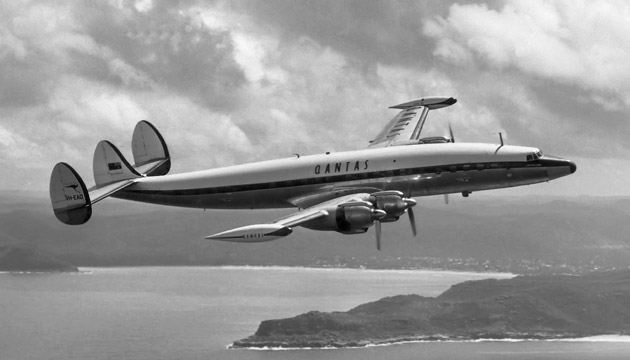The Qantas Founders Museum has filled an important gap in Australian aviation history with the acquisition and renovation of a Super Constellation plane.
Story John Dunn
The early morning sun is just beginning to light up the seemingly endless western Queensland plains and reflects brightly off a cluster of shiny silver and white aircraft lined up at the side of the Longreach Airport. They’re an imposing group – a massive jumbo jet, a sleek 707, an old-time DC3 and a Catalina amphibian. All are in good condition because this is the Qantas Founders Museum’s historical collection of Australia’s national airline fleet. Qantas was born in Longreach, Qld, 97 years ago, and the museum’s exhibits retell that story and of the airline’s development since then.
One plane doesn’t come up to the standard of the others – but it will soon. The Super Constellation is currently being restored and, when completed, will fill an important gap in the museum’s array of planes.
The ‘Super Connie’, as it is affectionately known, was the aircraft Qantas used to establish its long-range Sydney-to-London service in 1954. It was the first aircraft to operate regular around-the-world flights in 1958, the first Qantas aircraft to have hostesses and the airline’s first pressurised aircraft. So, for the museum, its inclusion was vital.
“We’ve been trying for years to get hold of a Super Constellation because it changed the nature of flying for Australians and made such a significant contribution to the development of Qantas,” says Rod Seccombe, manager of this project and a long-time museum director. “It took the flying boats 10 days to reach London. The Super Connie reduced that to less than four – that’s a terrific difference. It was an iconic aircraft in our aviation history.”
The Super Connie was an attractive plane. Its fuselage was gracefully curved, resembling the lovely lines of a dolphin, and it had a most distinctive tri-tail. It was a favourite with travellers, even though it virtually chugged along at 483 km/hour and its cruising height of 6000 metres (today’s jets mostly fly at double that speed and height) seemed just above the treetops, but it provided a magnificent view of the world below. And it was uncrowded, carrying just 57 passengers.
This story excerpt is from Issue #117
Outback Magazine: February/March 2018









